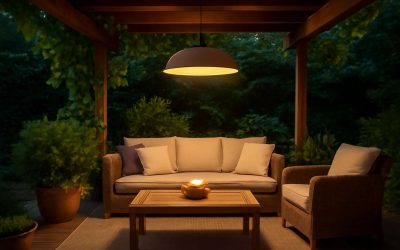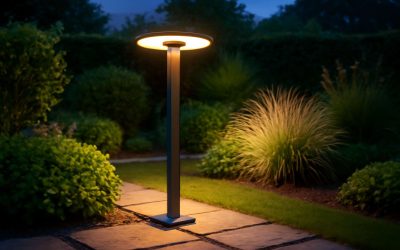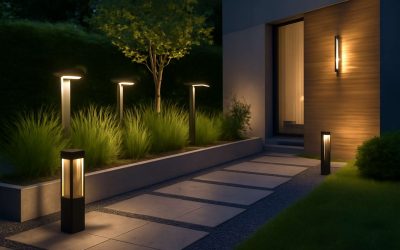
If you are looking for ways to light up your outdoor space without paying for electricity, solar garden lights are an option worth considering. Not only do they look stylish and provide an ambient glow, but they are also easy to install and turn on automatically. They can be buried in the ground or placed on a bench or table, and can create an array of effects from pools of light that highlight plants to bright spots that illuminate a pathway.
These small, battery-powered lights work using a solar panel that converts sunlight into energy to charge the batteries inside your light. When it gets dark, a photoresistor registers the lack of light and activates your solar lights’ batteries, which then powers an LED bulb. Depending on how sunny your area is, and where you position the solar-powered landscape lights, you can expect your light to remain on for about 12 to 15 hours.
When choosing a solar garden light, you can also consider special features, such as motion-activation or a timer control, to help you save energy. Some solar lights can be controlled with your smartphone, allowing you to set them up on a timer or change the color and pattern of the light. Others may also be WiFi-enabled, enabling you to connect them to your home’s Wi-Fi and control them from anywhere with an internet connection.
One of the main reasons people choose to use solar garden lights is the convenience. There are no wires to worry about and installation is simple, which can be a major benefit for homeowners who are short on time or who want to avoid DIY projects. Once installed, most of these lights will turn on and off automatically, which makes them a perfect solution for busy households.
In terms of aesthetics, solar lights are available in a wide range of styles and finishes to suit most outdoor schemes. From traditional metal lanterns to sleek, modern designs, these lights can be used for all sorts of purposes — illuminating a cozy garden coffee table or a spot for al fresco dining is a great example, but you could also put them in the middle of your garden as a feature piece or place them alongside your driveway to add a warm glow as you drive up at night.
Regardless of where you put your lights, it is important that they receive enough sun to fully recharge their batteries throughout the day. For the best results, position them in a sunny area where they will get 6-8 hours of direct sunlight. If they are mounted on a wall or fence, consider a location that is free from shade and not in the path of your lawnmower or blocked by any windows.
It is also a good idea to think about how the brightness of your solar-powered garden lights will affect wildlife, so you don’t disturb any birds or insects who use your outdoor spaces for shelter and food sources. Too much artificial light can disorient nocturnal animals and disrupt their breeding cycles. Keeping this in mind, opt for soft or dim-lit lighting, and choose options with hoods to reduce the glare for a safer, more environmentally friendly solution.



0 Comments